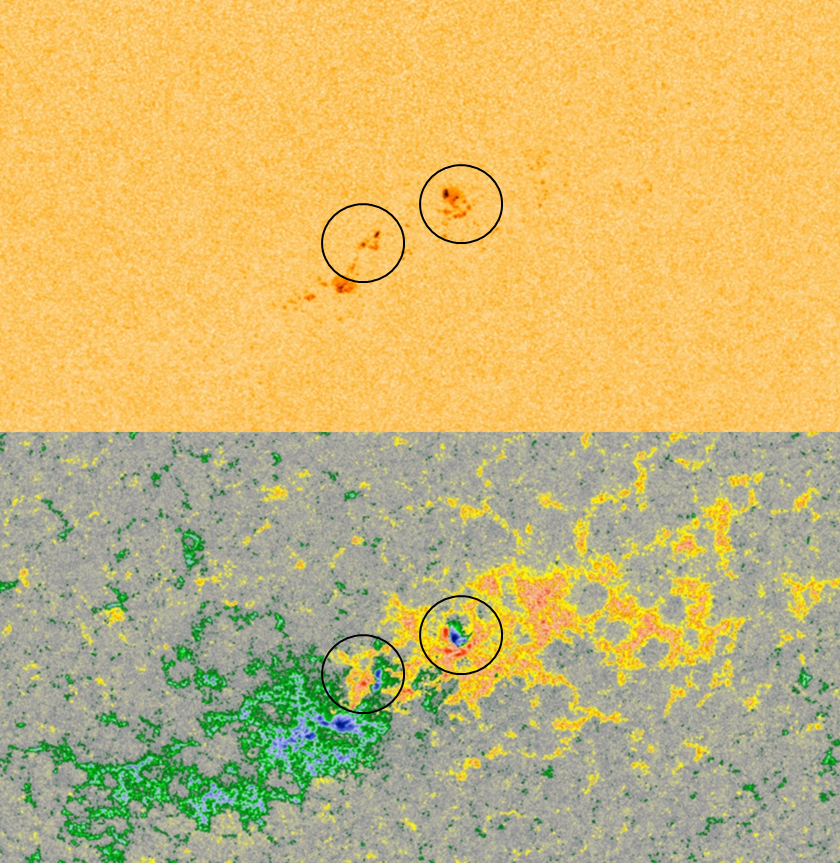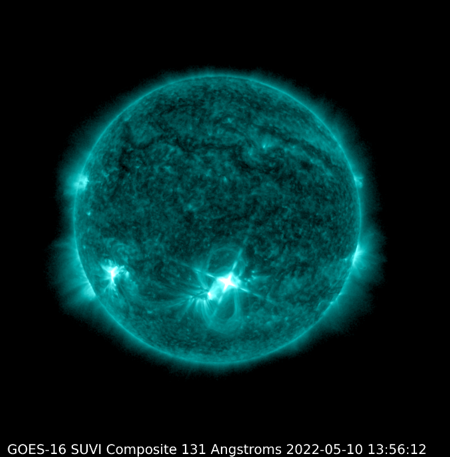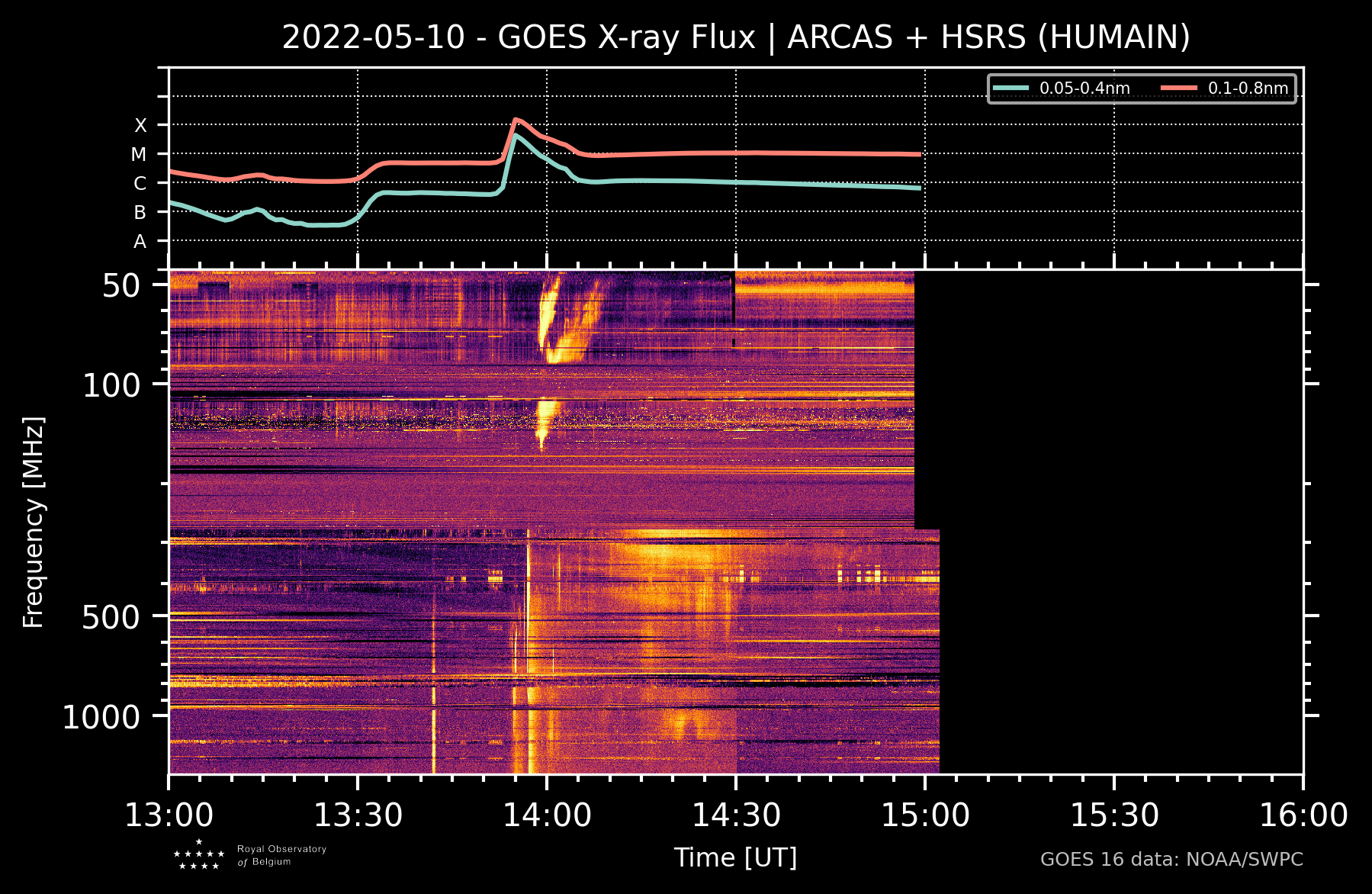NOAA 3006 rotated over the Sun's east limb on 3 May. Despite being a rather small sunspot region, it produced an X1 flare the same day (see this STCE news item). Over the subsequent days, it developed only some small sunspots in what seemed to be the magnetic remnants of a decaying, nearly spotless active region. However, over the last 2 days, some of the newly emerging small spots had magnetic polarities opposite to the surrounding areas, as can be seen in the zooms underneath from SDO/HMI imagery (white light on top, magnetogram in the lower image) taken at 13:15UT on 10 May.

One can see this from the overall magnetic structure of the original region, which is typical for active regions in the southern solar hemisphere: red (negative polarity) leading and blue (positive polarity) trailing. It is not unusual that magnetic flux of opposite/mixed magnetic polarity emerges in these magnetic remnants (the region still has some "fuzz"), which then usually leads to some flaring activity. In this case, the sunspots seemed quite small to initiate major flaring activity, but as it happens, this active region NOAA 3006 just produced an impulsive X1.5 flare peaking at 13:55UT today 10 May. See the attached image (GOES/SUVI 131). As the x-ray emission of the flare affects the inner portion of Earth's ionosphere, radio blackouts at high frequencies were -once again- most likely experienced over the Atlantic, West-Europe, West-Africa, and the northeast of South-America (map DRAP).

The radio observatory in Humain Belgium seems to indicate there was a Type II radio burst associated with this flare (see graph underneath, with the evolution of the GOES soft x-ray flux on top), which may hint that a coronal mass ejection (CME) was associated with this flaring activity. EUV imagery also indicated the presence of a coronal wave. So, any associated CME may indeed be directed towards Earth. This has to do with the current location of the region, which is close to the central meridian (the virtual "north-south" line) on the Sun meaning that it is directly facing Earth. How well it be directed at Earth can be determined only upon availability of coronagraph imagery. The risk on an earth-directed CME will gradually decrease over the next few days as the region approaches the Sun's west limb, because any related CME is then not squarely directed to Earth anymore.
If the sunspots further develop AND the opposite magnetic polarity structure remains present, more strong flaring is possible. Further updates on the flaring activity and associated CMEs can be found on the SIDC SWx forecasting page.






